The Clubhouse with Three Lives
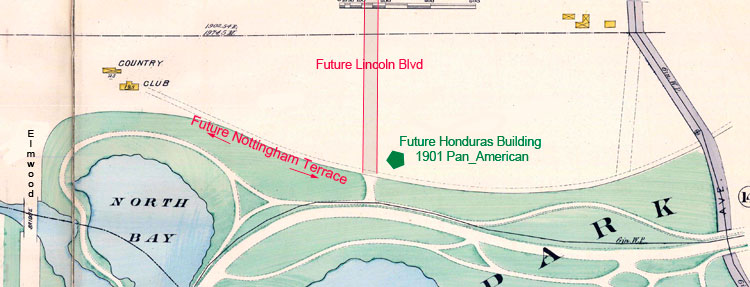
The undeveloped land north of Delaware Park in 1894. Only the Rumsey farm (top right) and the Country Club of Buffalo are built on this expanse. Image source: 1894 Buffalo Atlas
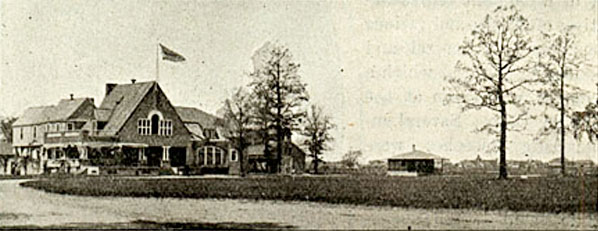
The Country Club of Buffalo before 1900. Image source: Pan American Magazine
Betweem 1889 and 1899, the clubhouse was a lively scene of recreational and social acitivities among Buffalo's elite families.
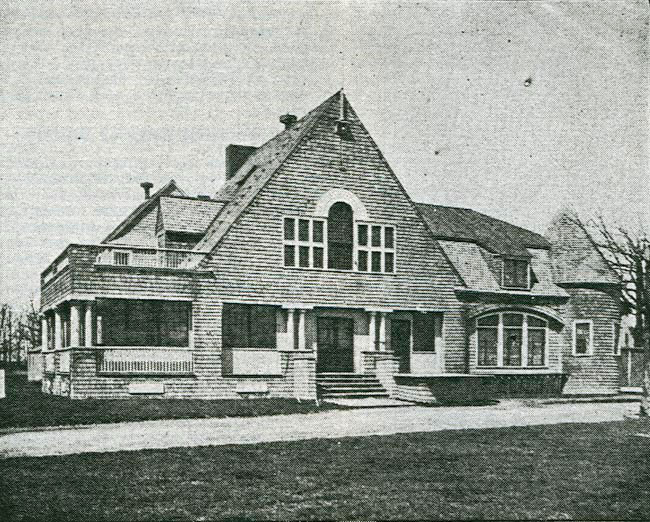
Detail of the clubhouse. Image source: private collection
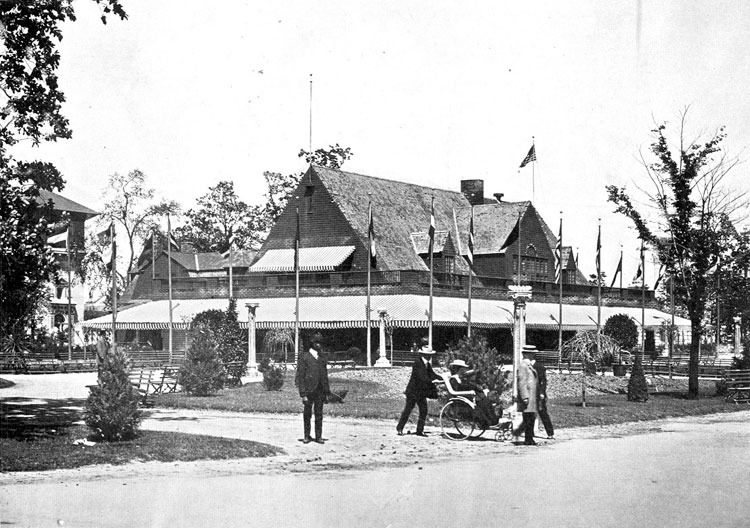
The Women's Building with its verandas shaded by green and white striped awnings. Image source: C.D.Arnold
The Board of Women Managers of the Pan-American Exposition were allotted $7,000 to remodel the CCB clubhouse for their purposes. The Board expanded the building and added a piazza on three sides to provide welcome shade for the seasonal fair. The purpose of the building caused some confusion and complaints on the part of the general (female) public visiting the Exposition, who viewed it as a respite from the hustle and heat of the day. But the organizers intended the building to be used by reservation by women's groups visiting the Exposition and so it was not open to the public for most of the duration. It was well used by alumni of women's colleges who held reunions there, club women from all the Exposition countries, professional organizations, the International Council of Women and others of this type.
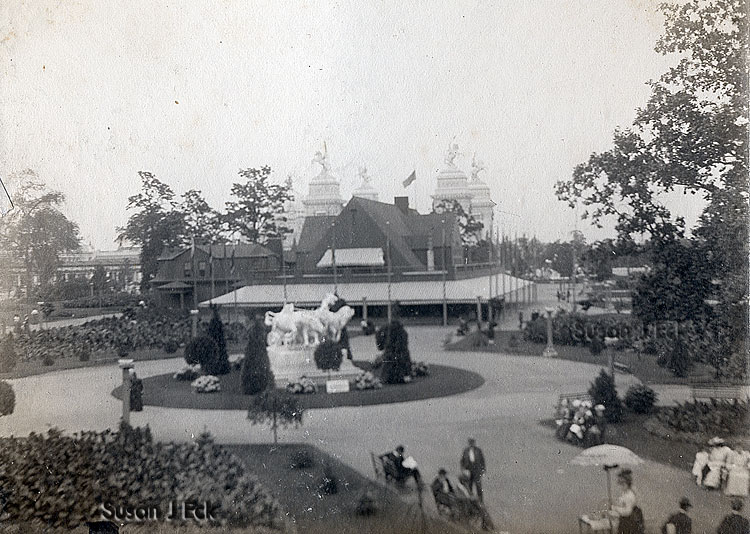
Women's Building with the Triumphal towers in the background, Frederick Roth sculpture, 'The Chariot Race,' in front. Image source: author's collection.
The building's location, surrounded by extensive gardens, attractive statuary, and an impressive fountain by well-known sculptor, Enid Yandell, was popular with visitors who enjoyed the fragrant rose gardens and the shade of mature trees. For more information on the Women's Building at the Pan-American Exposition, look here.

The former Women's Building in April 1903, with various state and foreign buildings still awaiting demolition. The plaster sculpture of 'The Chariot Race' sags at right.
In 1903, the divisions between the two factions of the CCB were resolved when the younger members took the club's name to the 70-acre tract at Main and Bailey and, with member George Cary as architect, built a large clubhouse with extensive stables. They also took a number of plaster nymphs and satyrs from the Exposition grounds to decorate their driveway.
The other members, which included George Matthews, Ansley Wilcox, George Urban, Jr., George Metcalfe, Edward Kent, etc. voted to call their new country club the Park Club. Their clubhouse would be the former Women's Building on the Exposition grounds. Initial optimism about the condition of the clubhouse and its landscaped grounds was dashed when close inspection revealed that either the Chicago House Wrecking Company, official dismantlers of the main Exposition buildings, or vandals had essentially looted the clubhouse. All plumbing fixtures and pipes, all electrical wire had been removed. Outside, the grounds had been excavated for drain tile and exploratory trenches extended in every direction.
Restoration required around $7,000 and the time of committee members. Even then, the sculpure in the photo above mortified one grounds committee member because, as the Buffalo Express said, it "did not look as much like a Ben Hur as a Has-Been Hur."
Nonetheless, the clubhouse and grounds served for a year or two until the building was moved to the corner of Lincoln Parkway and Nottingham Terrace on rollers. The stated purpose of the club were golf, automobiling, tennis, and horseback riding. Members also enjoyed trap shooting, winter skating and curling on part of the former Exposition canals, dancing and cards. For golf, the club had 9 holes adjacent to the clubhouse and used, with maintenance payments to the city, the holes in Delaware Park. Seven tennis courts were constructed along Nottingham Terrace. Early on, the club had 250 members, but by 1925, there were 800 members who could also use the club's course in Orchard Park. The focus had become golf and the membership decided it needed a new location.

1915 map of the rapidly changing North Buffalo area. The red dotted line shows the path taken by the clubhouse to its new location at the corner of Lincoln Boulevard and Nottingham Terrace. Image source: Historic Map Works.

1911 photo. Image source: private collection
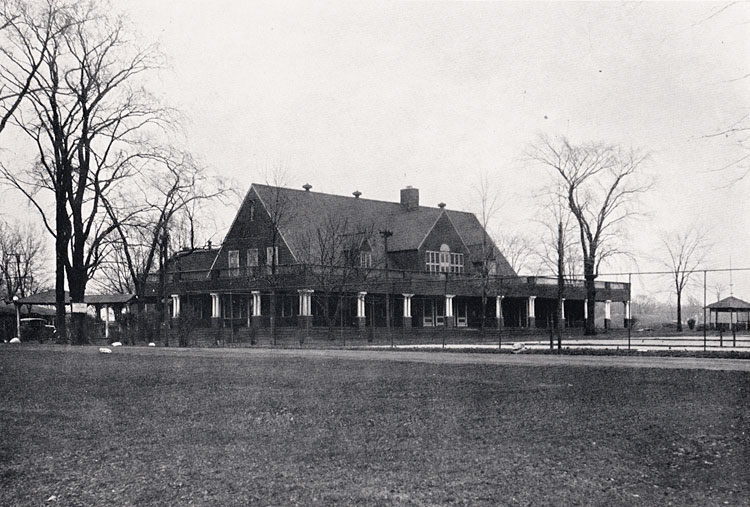
Another view of the Park Club. Image source: TBHM publications.
The clubhouse was moved to the location of the Honduras Building of the Pan-American Exposition. See it here.
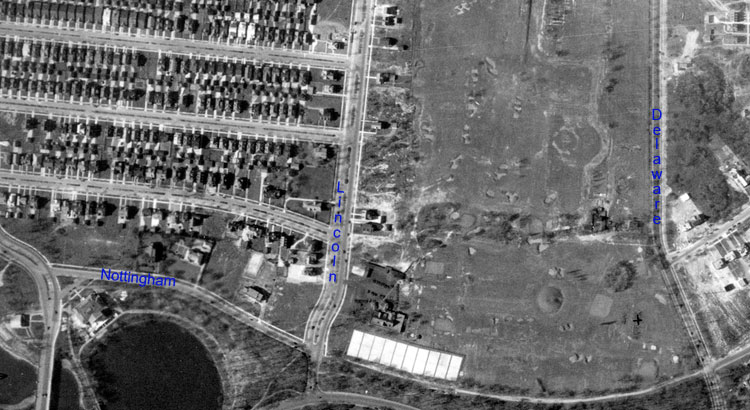
1926 aerial view of the north Buffalo lands, Nye Park development at left. The Park Club has laid out 9 holes on the former Pan-American grounds (former canals still visible). Image source: UB Libaries Map Collection
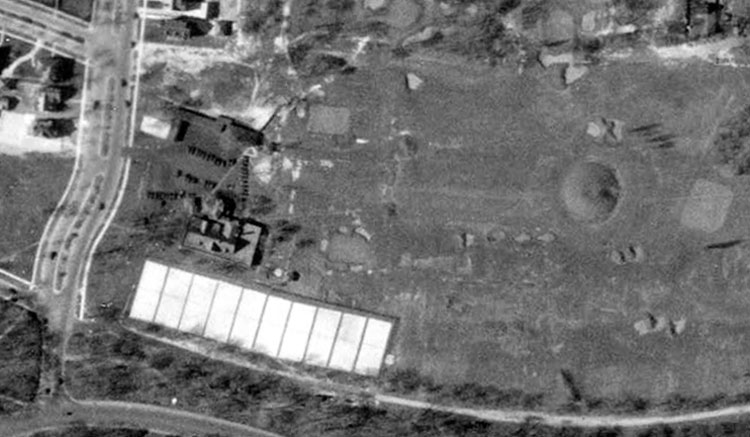
Detail of the 1926 image,showing the tennis courts and the clubhouse, largely unchanged from its 1901 appearance.

1911 photo. Image source: private collection
In December, 1928, the Park Club opened its new brick and stone English Gothic clubhouse on property in Williamsville. The month before, the Dexter P. Rumsey Co., owners of the Park Club property site in North Buffalo, sold about seven acres to Edwin Lang Miller. He said that he would build a home for a member of his family and subdivide the rest for residential development. The old clubhouse was demolished for construction of the 12,000 square foot Tudor Revival mansion in 1929-33 now called the Miller Mansion.